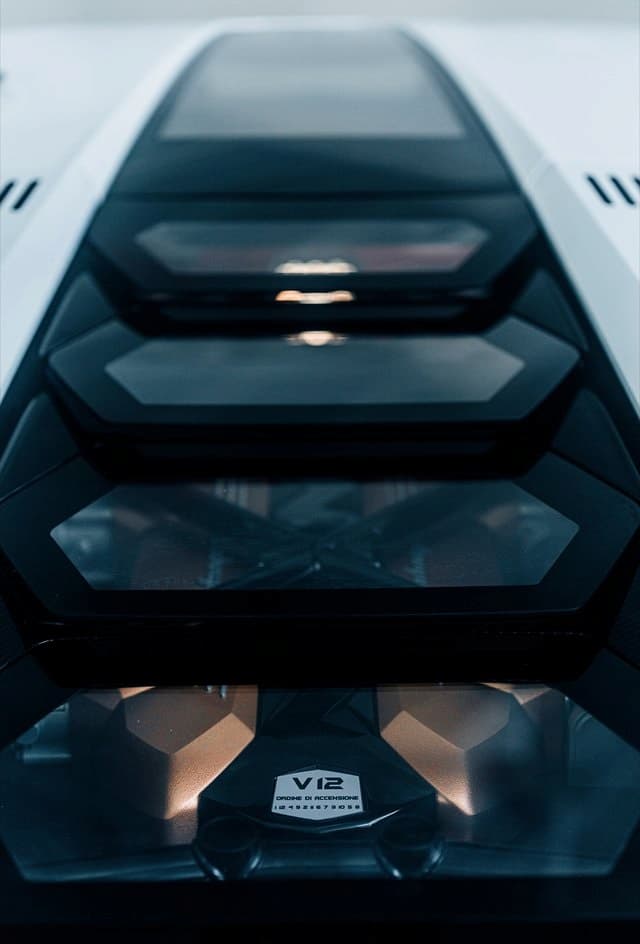The Countach LPI 800-4 comes as a mild hybrid model, but still boasts a V12 naturally aspirated engine. Here is what it’s all about.
Lambo fans should be pleased to hear that Lamborghini Automobili is paying tribute to the Lamborghini Countach that ran from 1978 to 1990. The revival attempts to imitate all the features we all loved on the old one, while implementing the latest tech and features. The code name LPI 800-4 translates to 814 CV (Cheval-Vapeur), which equals 802 hp thanks to the naturally aspirated 6.5 liter V12 in combination with a 48-volt system, similar to the Lamborghini Sián FKP 37. Even though the news is great just like Countach’s performance, some fans are still displeased, as I’ll explain below why.
Specifications and performance
As previously stated, the Countach shares the same platform with the Sián FKP 37, meaning that you should expect to see the same high-quality carbon monocoque body here as well. The reduction in weight due to carbon fiber usage, brings the curb weight down to 1,595 kg (3,516 lbs), which isn’t bad considering that the track spec’d Aventador SVJ weighs 1,525 kg.

Moving on to the most important part, the engine, the Countach maintains the naturally aspirated V12 as the other Lambo models, as to preserve responsiveness, sound, and pleasure. The engine is capable of producing an impressive 769 hp by itself, and although the added 48-volt motor might seem redundant in fear of increased complexity and loss of feedback, it actually improves performance and responsiveness. This is achieved by its super-capacitor technology that is able to deliver three times more power compared to a Li-ion battery, bringing the total number of horses to 802. The power from the engine to the wheels is delivered via a 7-speed single-clutch robotized manual transmission (ISR), just like the Sián FKP 37 and all Aventador models. The final numbers speak by themselves: 0-100 km/h (0-62 mph) in 2.8 seconds and 0-200 km/h in 8.6 seconds. The top speed comes at 355 km/h (220 mph).
Regarding the suspension, active push-rod magnetorheological shock absorbers are found on the front and rear wheels to improve handling in different road conditions and when selecting different driving modes. Also, 4-wheel steering for greater high-speed stability and low-speed maneuverability, along with a 4WD system for better grip, are there to ensure that the car feels as nimble and glued to the road. Finally, the tires are Pirelli P Zero for the best handling in dry and wet conditions.
Exterior design
The exterior details of the Countach are directly inspired by its predecessor to retain its vintage character. However, it’s still based on the established platforms, meaning that the car has the current proportions and design language of the last-gen Lamborghinis.

The headlights are square-shaped, the engine cover is almost identical to the previous one, and the side air intakes extend to the doors in a triangle shape just like they used to. The rims also follow the retro style, with 20 inches at the front and 21 inches at the back. The colors are also directly reminiscent of the old Countach, as they should, and they come in various schemes. Namely, there is Impact White, Giallo (yellow), Viola Pasifae (purple), and Blu Uranus (blue).

However, the biggest problem with the Countach is that the design resembles more the Sián FKP 37 than it does its predecessor, and it’s obvious that there wasn’t enough room for the engineers to differentiate between the two. This can be seen by the fact that the side profile and rear-end are brought from the Sián. It wouldn’t be an exaggeration to say that it looks more like a Sián with square headlights than a Countach. As this wasn’t enough, the characteristic large spoiler is also missing. Therefore, the fans would be in the right to claim that Lamborghini failed to completely revive the Countach, and just chose a cheap way of forking more money from its buyers.

Interior design
The interior is a decent place to be. You are surrounded by a jet-fighter-inspired cockpit that engulfs you in quality leather and carbon, giving you the highest grade of immersion and an unforgettable driving experience.The style follows a Y and Hexagonal shape pattern that give an undoubtful feeling that you are sitting in a sports car. As expected, the differences with the Sián are minimal, but that’s not a bad thing. As they say, “if something ain’t broke, don’t fix it.”

Price and availability
The new Countach is limited to 112 units. Chances are, you have already missed them all. However, in case you haven’t yet, expect to spend at least $2,600,000 (€2,23 mill) to make it yours.
Verdict
The Countach LPI 800-4 is an amazing piece of machinery based on the equally amazing Lamborghini Sián FKP 37, dressed in a retro style to bring it as close as possible to its predecessor. Although, I believe a better job could have been done, I still think it’s worth having it in your collection.
What do you think about the new Countach LPI 800-4?
Is it just a Sián with a retro body kit? Please, let us know in the comments.
Subscribe & follow us for more.





Comments
Loading…